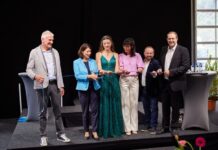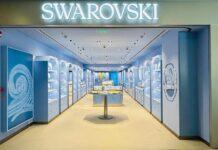
GIA scientist Dr. Karen Smit is the lead author of Science magazine article
Diamonds, long prized for their beauty and rarity, continue to reveal clues about the early history of our planet. To better understand how the most ancient continents came to be, researchers examined tiny mineral remnants trapped in diamonds during the formation of the earth. The results were published today in Science magazine, in the article Sulfur Isotopes in Diamonds Reveal Differences in Continent Construction by GIA (Gemological Institute of America) research scientist Karen Smit; Steven B. Shirey and the late Erik H. Hauri of the Department of Terrestrial Magnetism of the Carnegie Institution for Science; and Richard A. Stern, a research scientist at the University of Alberta.
“Diamonds are one of the most valuable gems, not only as jewelry but also in geoscience,” said GIA research scientist Dr. Karen Smit, the lead author of the recently published article in Science. “The mineral inclusions in diamonds let us study the inaccessible depths of Earth – somewhere that today’s science cannot otherwise reach.”
The researchers examined diamonds from the Zimmi mining area near the Libera-Sierra Leone border, which is known for producing yellow diamonds. The Zimmi diamonds are classified as Type Ib diamonds because they have rare nitrogen impurities. Type Ib diamonds are exceptionally rare in nature, accounting for less than 0.1% of natural diamonds mined worldwide. By laser-cutting and polishing very thin plates from the Zimmi diamonds, the researchers were able to isolate and study sulphide inclusions, extracting chemical isotopes that offered clues to when the diamonds – and the deepest and oldest parts of the continents – formed.
“This kind of insight is possible only because of the unique characteristics of diamonds,” said Dr. Wuyi Wang, GIA vice president of research and development. “GIA’s significant investment in research, unique access to rare diamonds and the outstanding collaboration with the Carnegie Institution and the University of Alberta made this significant discovery possible.”
GIA has more than 60 years of continuous research on diamonds, colored gems and pearls as part of its mission to protect consumers and ensure their trust in gems and jewelry. The sustained research effort – with more than 60 full-time researchers, 22 with Ph.D.s – yields findings that reach a global audience though Gems & Gemology (G&G), GIA’s quarterly professional journal; the Institute’s website, GIA.edu, where allG&G articles are available at no cost; and the many scientific journals and conferences where GIA researchers share their findings. This research supports the Institute’s industry-leading gemology education offerings, and the identification and grading services of its gemological laboratories.
Disclaimer: This information has been collected through secondary research and TJM Media Pvt Ltd. is not responsible for any errors in the same.


























